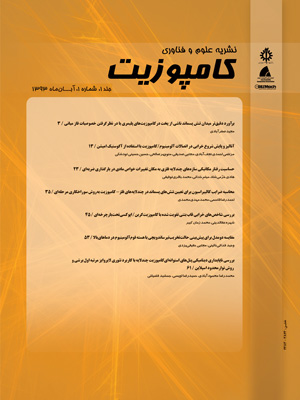نوع مقاله : مقاله پژوهشی
نویسندگان
1 استادیار، مهندسی مواد، دانشگاه صنعتی خواجه نصیرالدین طوسی، تهران
2 دانشجوی کارشناسی ارشد، مهندسی مواد، دانشگاه صنعتی خواجه نصیرالدین طوسی، تهران
3 دانشجوی دکتری، مهندسی نساجی، دانشگاه آزاد اسلامی، واحد یزد
چکیده
چکیده الیاف پلیاکریلونیتریل اکسید شده از پایدارسازی حرارتی الیاف پلیاکریلونیتریل به دست میآید و به عنوان ماده ی اولیه برای تولید الیاف کربن استفاده میشود. در این تحقیق اثر افزودن این الیاف بر خواص مکانیکی کامپوزیتهای زمینه پلیمری تقویت شده با پارچه های سه نوع الیاف پیشرفته بررسی شد. بدین منظور 13 نوع کامپوزیت زمینه اپوکسی تقویت شده با یکی از انواع پارچه الیاف کربن، کولار و شیشه به همراه الیاف پلیاکریلونیتریل اکسید شده به روش لایه گذاری دستی به صورت چهار لایه با چیدمانهای متفاوت ساخته شدند. برای ساخت کامپوزیتها از رزین اپوکسی بیسفنولF و هاردنر پلیآمینی استفاده شده و نسبت رزین به الیاف 60 به 40 درصد وزنی انتخاب شد. سپس خواص کششی و سطح مقطع شکست کامپوزیتها مورد بررسی قرار گرفت. نتایج نشان داد که با افزایش نسبت الیاف پلیاکریلونیتریل اکسید شده به پارچه کربن، کولار و شیشه، استحکام کششی و مدول الاستیک کاهش یافته اما در نسبت های بالای 50% وزنی میزان کرنش شکست افزایش مییابد. بررسی سطح مقطع شکست نشان داد که کامپوزیتهای ساخته شده با یکی از پارچه های الیاف کربن، کولار و شیشه به همراه الیاف پلیاکریلونیتریل اکسید شده، به ترتیب دارای نوع شکست عرضی، انفجاری و لایه لایه شدن لبهای میباشند و با افزایش نسبت الیاف پلیاکریلونیتریل اکسید شده به پارچه های کربن، کولار و شیشه، نوع شکست عرضی میشود
کلیدواژهها
عنوان مقاله [English]
Hybridization effect of fibers reinforcement on tensile properties of epoxy composites
نویسندگان [English]
- Reza Eslami Farsani 1
- Hossein Ebrahim Nejad Khaljiri 2
- Hamid Khorsand 1
- Kosha Abbas Banaee 3
1 Material Department, Khaje nasiredin Tosi University
2 Material Department, Khaje nasiredin Tosi University
3 Extile Department. Eslami Azad University
چکیده [English]
Abstract Oxidized Polyacrylonitrile fibers (OPF) are made by thermal stabilization of polyacrylonitrile (PAN) fibers and are used as precursors materials for production of carbon fibers. In this paper, effect of adding these fibers on tensile properties of polymer matrix composites was studied. So thirteen kind weights of epoxy matrix composite reinforced with one of the carbon, Kevlar and glass fabrics including OPF by hand lay up method as four layers with different layering were made. For making of composites epoxy Bisphenol F resin and polyamine hardener were used and the resin to fiber fraction was selected as 60 percent. Then tensile properties and failure cross section of them were studied. Results showed that by increasing OPF to carbon, Kevlar and glass fabric ratio; the tensile and modulus strength decreased but in more than 50 weight percent ratios failure strain increased. Study of the fail cross section showed that composites made with one of the carbon, Kevlar, glass fabrics including OPF have lateral, explosive and edge delamination failure modes respectively and with increasing the OPF to carbon, Kevlar and glass fabric transverse failure mode happens.
کلیدواژهها [English]
- Oxidized Polyacrylonitrile Fibers
- epoxy
- Hybrid composite
- tensile properties
